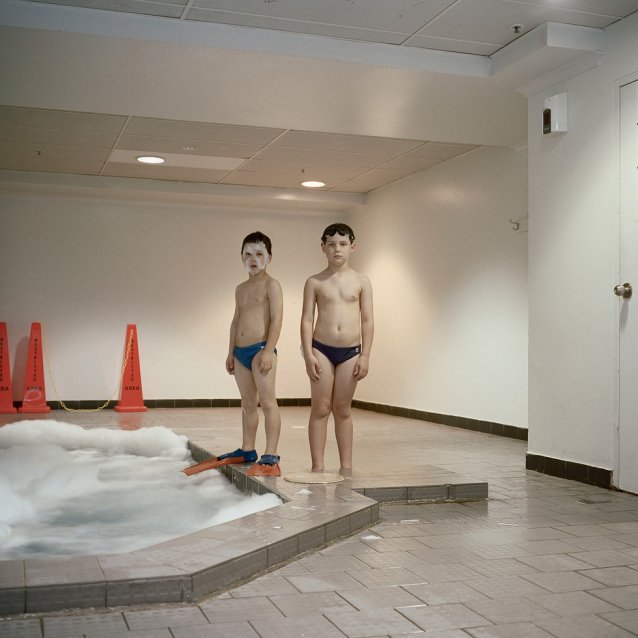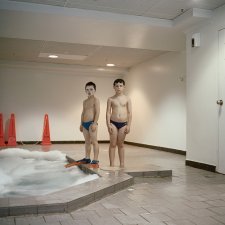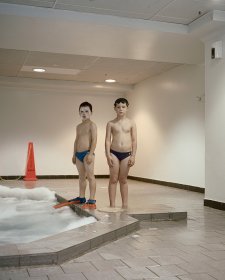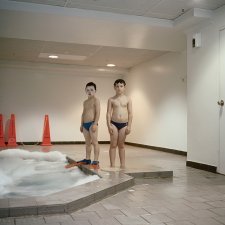So, I'm Ingvar Kenne and I'm the National Portrait Prize winner in 2009, with the portrait of my two sons, Callum and Cormac. The pool where my two sons are photographed in is a place I never really liked. You walk in there, it's like walking into this chloride filled dungeon, hot and steam, and kids used to love it!
So we used to have to sit there for hours on end so, it wasn't my favourite place to be. And I had just came up from the bigger pool myself and walked into this kind of moment where the boys had been playing around with the foam in the spar section, and they had flippers on, I don't know what game they were into. And I said, look, instantly knew that this is brilliant. Either I walk into a space like, like with the kids, they were in it, but in NLCS you walk in and it's like it's a beautiful frame. Normally it's the location that gets me going. But occasionally it's just, oh, this person just wonderful, you know? And then I'm looking around and trying to work out where that portrait can work within that moment of having met that person.
Yeah, so, the importance of prizes. I, enter a lot of prizes, myself, photographic prizes, and put it in there, otherwise you can't win. I remember the feeling and I like it, but it was like Chris Chapman called me up and say, so it was almost like he expected me to know. Like the way he delivered it was like, yeah, so you won the portrait prize. As in, let's just formalise this, come back to Canberra and pick it up. It's like, it felt like, he thought I should have known.
To be accepted is kind of, I think that's kind of, generally you should feel kind of really good about that. Just to be part of the community that sort of represent the portrait prize or the portrait work in that particular calendar year is a great achievement, I think. To have one of them acknowledged, felt like an acknowledgment for the whole process. I think, over those years. And it was like a, a nice fit for me, that it was of the two boys and we could all be there to share it really.
Since the prize I've just continued taking more portraits and using my strict parameters and, you know, I just keep doing what I do. I don't change to what's in fashion or in Vogue. I just keep doing what I do. So that was the biggest thing that allowed me to, I think just gave me confidence to keep going on a journey that I want to continue being on.














